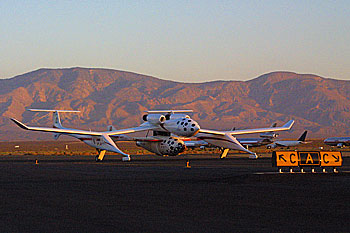WTN’s recently released report [5.6MB PDF]includes these highlights:
- Academic research and development activities in Wisconsin total about $883 million in the latest year. That includes the UW System, the Medical College of Wisconsin, other private colleges and universities, the Marshfield Clinic?s research arm and the research programs of the Veterans Administration hospitals.
- Academic R&D is responsible for more than 31,000 jobs, directly and indirectly, in Wisconsin. That is according to an economic multiplier used by the U.S. Department of Commerce Bureau of Economic Analysis and the Association of American Universities.
- Academic R&D represents an area where Wisconsin performs well versus other states in attracting federal dollars. Wisconsin is 15th nationally, even without the inclusion of the Marshfield Clinic and the Veterans Hospitals.
- Academic R&D in Wisconsin has continued to grow, even as the economy retrenched in 2000-2003. In the last year alone, for example, R&D conducted in the UW System grew by $47.5 million.
- Academic R&D in Wisconsin could be at risk unless state support for the infrastructure supporting such research is maintained. Other states are investing in their infrastructure because they believe it makes sound economic sense.
The report contains these recommendations:
- The governor and Legislature should continue to invest in capital improvement programs such as BioStar and HealthStar, which leverage the assets of the UW-Madison and help to create spinout companies and jobs.
- The governor and Legislature should begin, in the 2005-2007 state budget, the process of restoring state support for UW System operations. Although many states have experienced similar budget difficulties, the erosion in the UW budget has been relatively steady for years and cannot continue if the state wants to protect its investment.
- The governor and Legislature should create a Wisconsin Innovation and Research Fund to help secure federal and corporate grants by providing small matching grants to UW System and private college faculty who collaborate with business on R&D.
- The UW-Madison, the Medical College of Wisconsin and the Marshfield Clinic should re-examine already strong collaborative research relationships to look for more opportunities to joint attract research funding and conduct science. Incentives to conduct inter-institution and interdisciplinary research should be established. This is similar to an approach being followed in Minnesota, where the University of Minnesota and the Mayo Clinic have recently announced joint initiatives.
- The governor and the Legislature should establish a commission, similar to the Michigan Commission on Higher Education and Economic Growth, to explore other options and to more deliberately track ?best practices? in other states.
Judy Newman interviewed local scientists, along with other interested parties.
I continue to believe the primary issue for us is not money, rather risk taking. We’ve certainly spent a great deal of academic research, only to see WARF license the technology to firms such as California based Geron, among other non Wisconsin entities.
These licensing activities beg the usual question: why should the taxpayers continue to pay when the fruits go elsewhere, similar to the long time discussion of our brain drain (two of my four UW roommates are in Colorado and California….)?
My View: Why spend more taxpayer money when we don’t capitalize on what we have now! I can’t imagine yet another government level technology council….
UPDATE: Tom Still (Report Editor and President of the WTN) sent me a followup email:
Jim — Thank you! It’s good to get the information out and let people debate how to set priorities. I appreciate your thoughtful approach.
— Tom
Send him yours: tstill at wisconsintechnologycouncil.com


